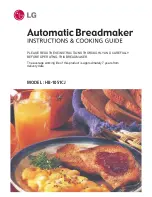
Class B digital device, pursuant to part 15 of the FCC Rules. These
limits are designed to provide reasonable protection against harmful interference in
a residential installation. This equipment generates, uses and can radiate radio
frequency energy and, if not installed and used in accordance with the instructions,
may cause harmful interference to radio communications. However, there is no
guarantee that interference will not occur in a particular installation. If this
equipment does cause harmful interference to radio or television reception, which
can be determined by turning the equipment off and on, the user is encouraged
to try to correct the interference by one or more of the following measures:
z
Reorient or relocate the receiving antenna.
z
Increase the separation between the equipment and receiver.
z
Connect the equipment into an outlet on a circuit different from that to
which the receiver is connected.
z
Consult the dealer or an experienced radio/TV technician for help.
BEFORE FIRST TIME USE
(A1)
Unscrew the drinking cup and water lid then clean the
drinking cup, capsule cap and inside the water tank with a
soft sponge, water and detergent. Screw the drinking cup
and water lid back onto the machine when dry.
IMPORTANT NOTE: DON'T WASH MAIN BODY OF MACHINE.
Only wash the drinking cup, capsule cap and inside the
water tank
.
(A2)
Insert the battery
CHARGING VIA AC ADAPTER (CERTAIN MODELS
ONLY)
Plug the AC adapter into the machine then plug
the AC adapter into a mains power socket. Allow
2.5-3 hours charging time.
CHARGING VIA 12V CAR CHARGER (CERTAIN
MODELS ONLY)
Plug the 12V car charger into the machine then plug into
your car 12V socket. Allow 2.5-3 hours charging time.
CHARGING VIA USB C CHARGING CABLE (CERTAIN
MODELS ONLY)
Plug the USB C charging cable into the machine then into a
USB mains power adaptor. Allow 6-8 hours charging time.
IMPORTANT NOTE FOR CHARGING:
FULL is displayed
when the battery is fully charged.
COFFEE MAKING PREPARATION
(B1)
Turn the machine upside down then unscrew the
drinking cup and capsule cap.
(1) This device may not cause harmful interference, and (2) this device must
accept any interference received, including interference that may cause undesired
operation. NOTE: This equipment has been tested and found to comply with the
limits for a
EN






































